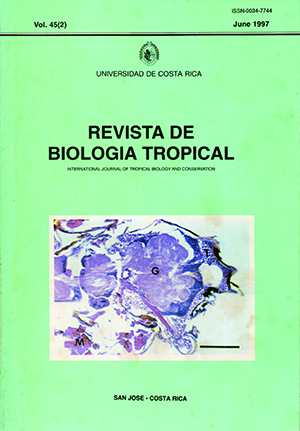Abstract
Spittlebug nymphs (Homopiera: Cercopidae) have a ventral abdominal breathíng robe tha! evolved as an adaptation to life in semi-liquid spittle mases. Although they are clearly "preadapted" (exapted) to an aquatic existence, onl.y oue aquatic spittlebug has been reported aLd !hat report has be,en chalienged. Rere 1 present evidence that nymphs of the Costa Rican spittlebugs Mahanarva illSignita (Fowler) and M. costaricensis (Distant) are facultatively aquatic on Heliconia (Zingiberales: Relicolliaceae). Sorne ¡¡ve submerged in the water-fiiled flower bracts of Heliconia wagnerialla. H. latispatrdl. H. tortuosa or H. bihai, while sorne ¡¡ve in drier microhabitats on ¡he ¡eaves, slems or inflorescellces of these and orhe!' Heliconia species. They represen! the fml well-documented aqu¡¡tic Homoptera and may be the firs! well-docurnented plant-sucking aqualic insects of any !dnd. By combining positive xyiem pressure and easily accessible xylem tissue removed from ordinary terresmal and aquatic predators, water-filled Heliconia flowers may offer an especially attractive microhabitat foc these xylem-feeding insects. M. costaricensis occurs in three morphological varieties: costaricensis, quatuordecimnotata and semimaculata, originalJy described as distinc! spedes.##plugins.facebook.comentarios##

This work is licensed under a Creative Commons Attribution 4.0 International License.
Copyright (c) 1997 Revista de Biología Tropical
Downloads
Download data is not yet available.


